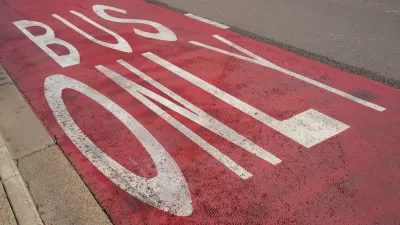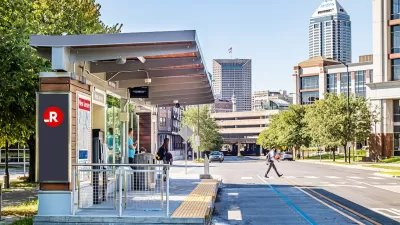Virtually every modern economy is mixed: governments produce some goods and services and private companies produce others. Governments generally provide those goods and services that are either considered essential and should be available to everybody regardless of ability to pay, or that require strategic coordination, including police protection, basic education, transportation infrastructure, parks, and public health services. Transportation facilities and services are among these basic government functions.
Virtually every modern economy is mixed: governments produce some goods and services and private companies produce others. Governments generally provide those goods and services that are either considered essential and should be available to everybody regardless of ability to pay, or that require strategic coordination, including police protection, basic education, transportation infrastructure, parks, and public health services.
Transportation facilities and services are among these basic government functions. Transport is all about connecting things, and it is generally not feasible for private companies to create the infrastructure needed to make these connections. Most experts conclude that transportation infrastructure does not lend itself to complete privatization because transport systems have network effects (economies of scale and scope) and external impacts, so pure privatization without regulation or subsidy generally leads to an inefficient transport system. Some functions can be contracted out, but most experts recommend that governments maintain strategic planning, management and performance standards, and provide subsidies needed to achieve strategic objectives.
For example, our local private airport shuttle service charges $19 for a 20-kilometer trip, operates uncomfortable cube vans, serves limited destinations, pays drivers low wages resulting in high turnover and requests for tips, has a loose schedule (vans leave about hourly, after sufficient passengers accumulate), and cannot accommodate wheelchair users (who must pay $60 for a taxi). In contrast, our public transit agency charges $2.50 to numerous regional destinations, has more comfortable vehicles, more professional drivers, more reliable service, and accommodates wheelchair users. Even accounting for subsidies (about $2.00 per trip) it is far cheaper per passenger-mile. This is just one of many examples illustrating the superior service and efficiency provided by public transit.
Private, unsubsidized transport services are sometimes cheaper or higher quality than public transit on a particular route, but these are exceptions, operating on a few corridors with high demand. They cannot provide an integrated network of transit services needed to achieve strategic planning objectives, such as basic mobility for non-drivers, reduced automobile traffic on congested urban corridors, or more accessible, multi-modal land use development.
A recently paper, Fixing Transit: The Case For Privatization, published by the Cato Institute argues that public transit is costly and inefficient and so recommends complete privatization and self-finance. It claims this would improve service quality and efficiency.
My report, Contrasting Visions of Urban Transport: Critique of "Fixing Transit: The Case For Privatization" challenges these claims. All examples cited in Fixing Transit of private, self-financing transit systems are either low quality or high price; there are no examples of high-quality, low-cost, unsubsidized transport systems comparable to what exists in most economically developed cities. Without public coordination and subsidies, private companies will only provide limited public transit services on a few corridors with high demand. It is true that in some situations private companies do provide inexpensive transport service, but this skims the cream, leaving public transit agencies with the less profitable routes, which results in less total service. Private companies lack incentive and resources to provide more services or to efficiently integrate transport services. As a result, they cannot achieve important community objectives such as providing basic mobility for non-drivers, reducing traffic problems, and supporting accessible land use development.
Fixing Transit makes numerous analytic errors. It is unrealistic when comparing automobile and public transit costs. It assumes that if transit were unavailable users could easily shift to automobile travel, rather than more costly taxi travel. It implies incorrectly that many public transit agencies are inefficient, although average public transit employee wages are comparable to private industry, and many of the agencies it criticizes have superior performance (measured as cost per passenger-mile or cost recovery) than national averages.
This is not to suggest that I oppose private industry involvement in public transit. In fact, I am a strong supporter of Bus Rapid Transit, a type of public-private partnerships that optimizes efficiency and service quality; governments build and operate bus lanes and stations, and define performance standards, and contract out bus service to private companies (many of which are cooperatives) based on their cost efficiency and service quality.
Public transit quality affects all residents, even people who do not currently use it. The trips it serves tend to be high value – basic mobility for non-drivers and efficient mobility on major travel corridors – and transit service quality can leverage transport and land use changes that affect a city's overall economic productivity and quality of life. Purely privatized, self-financing public transit provides less service than socially optimal, creating a cycle of declining service quality and ridership.

Manufactured Crisis: Losing the Nation’s Largest Source of Unsubsidized Affordable Housing
Manufactured housing communities have long been an affordable housing option for millions of people living in the U.S., but that affordability is disappearing rapidly. How did we get here?

Americans May Be Stuck — But Why?
Americans are moving a lot less than they once did, and that is a problem. While Yoni Applebaum, in his highly-publicized article Stuck, gets the reasons badly wrong, it's still important to ask: why are we moving so much less than before?

Research Shows More Roads = More Driving
A national study shows, once again, that increasing road supply induces additional vehicle travel, particularly over the long run.

Judge Halts Enforcement of Anti-Homeless Laws in Grants Pass
The Oregon city will be barred from enforcing two ordinances that prosecute unhoused residents until it increases capacity and accessibility at designated camping sites.

Advancing Sustainability in Los Angeles County Schools
The Los Angeles County Office of Education’s Green Schools Symposium brings together educators, students, and experts to advance sustainability in schools through innovative design, climate resilience strategies, and collaborative learning.

Using Old Oil and Gas Wells for Green Energy Storage
Penn State researchers have found that repurposing abandoned oil and gas wells for geothermal-assisted compressed-air energy storage can boost efficiency, reduce environmental risks, and support clean energy and job transitions.
Urban Design for Planners 1: Software Tools
This six-course series explores essential urban design concepts using open source software and equips planners with the tools they need to participate fully in the urban design process.
Planning for Universal Design
Learn the tools for implementing Universal Design in planning regulations.
City of Moreno Valley
Institute for Housing and Urban Development Studies (IHS)
City of Grandview
Harvard GSD Executive Education
NYU Wagner Graduate School of Public Service
City of Cambridge, Maryland
Newport County Development Council: Connect Greater Newport






























